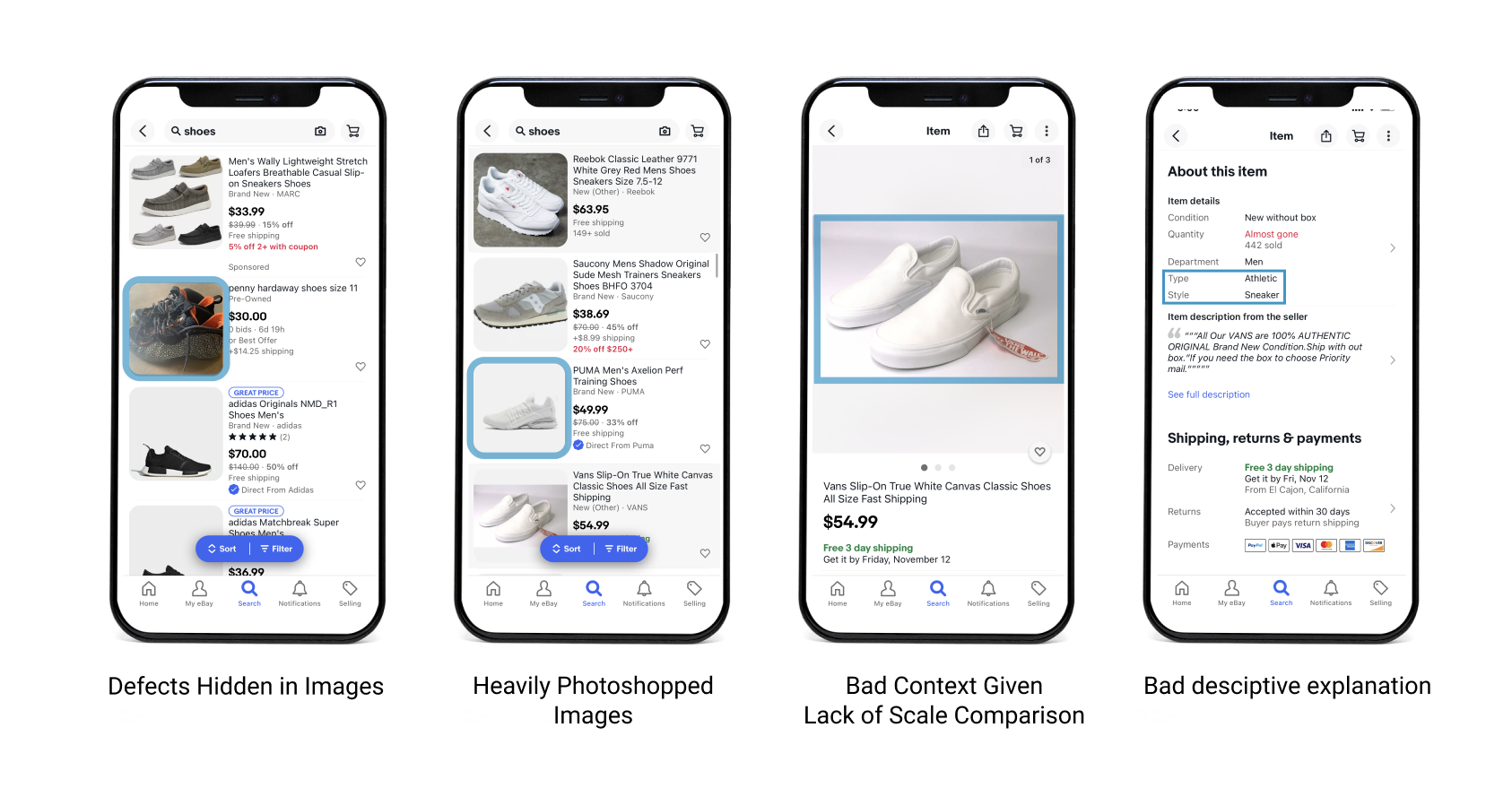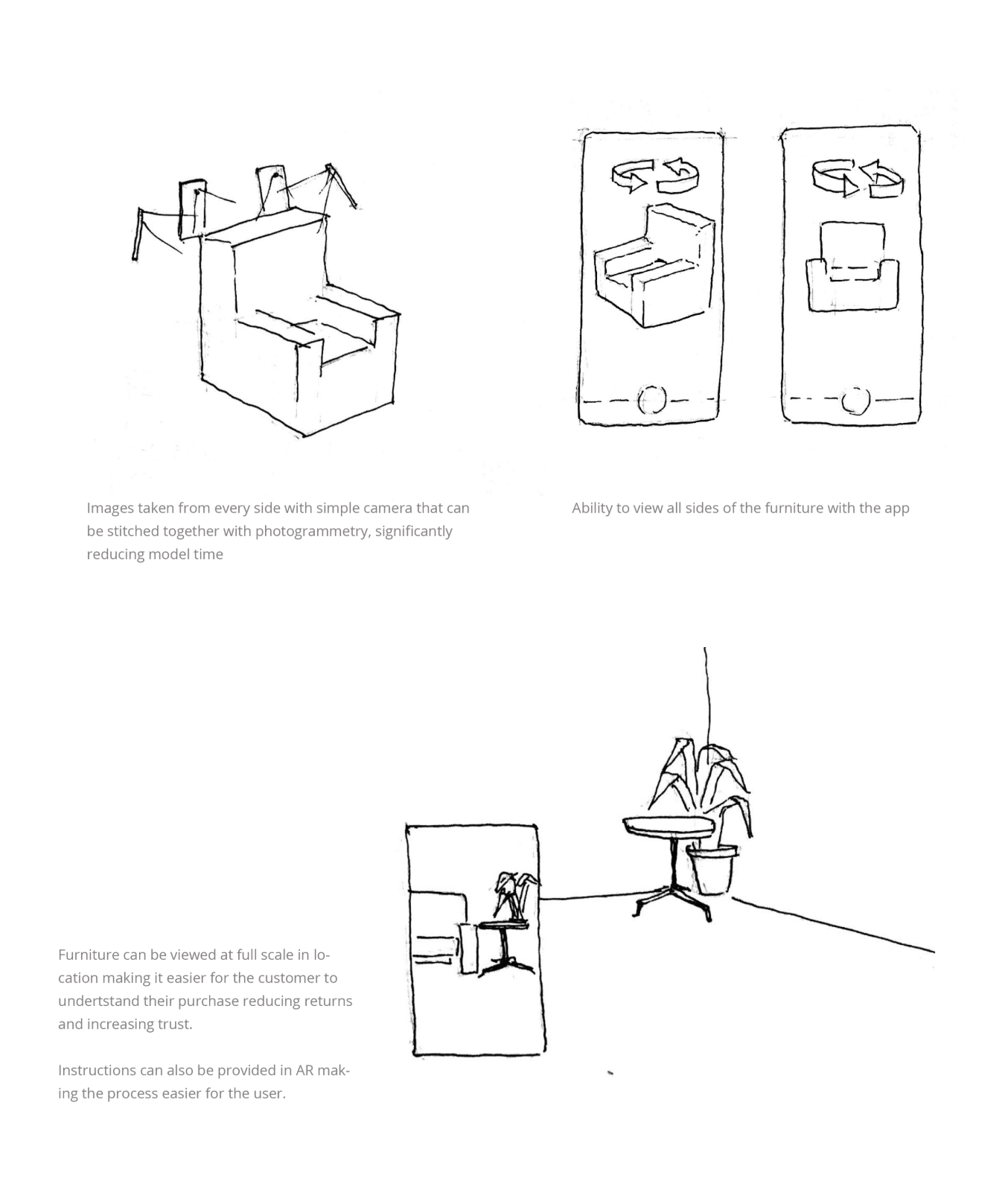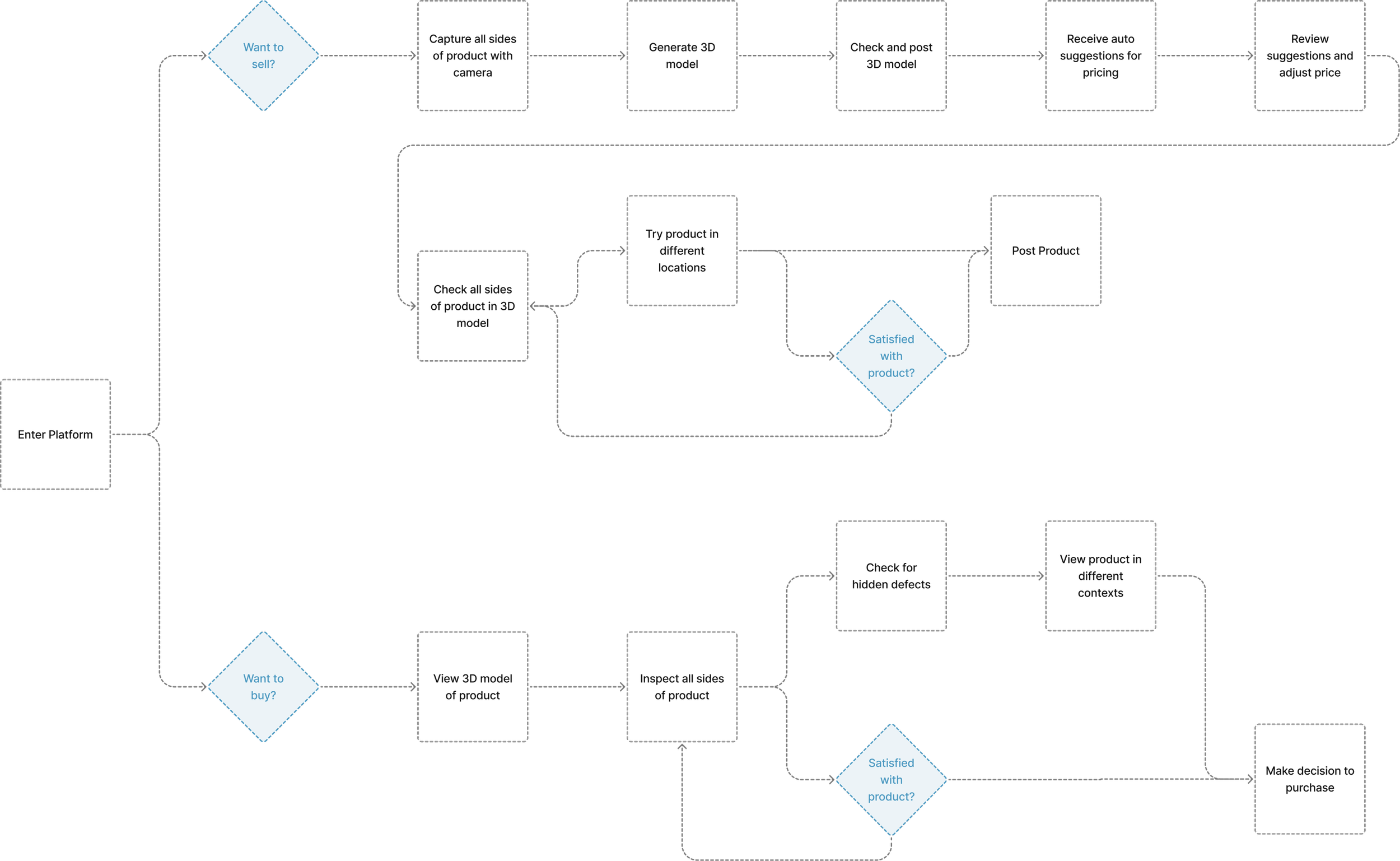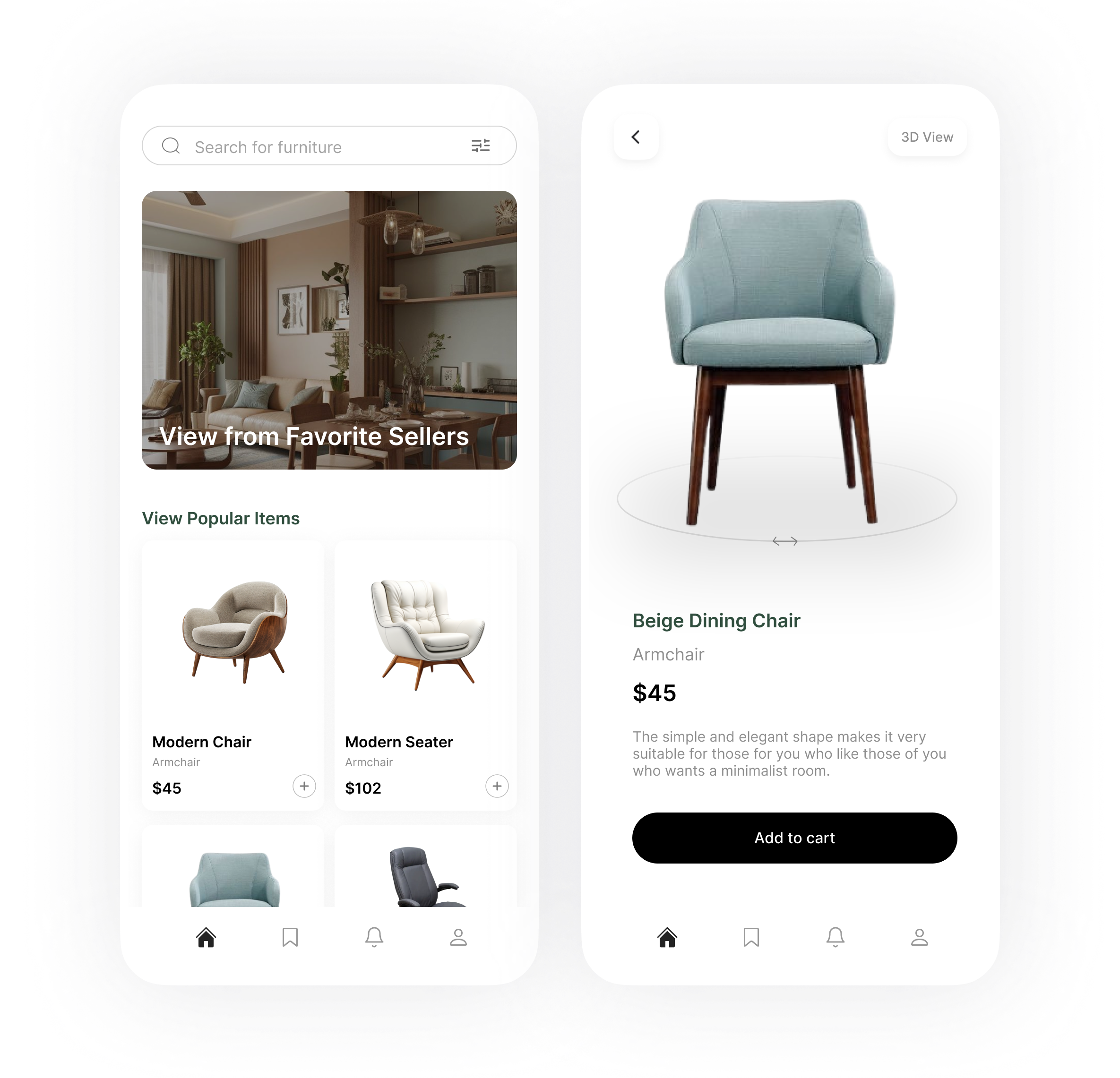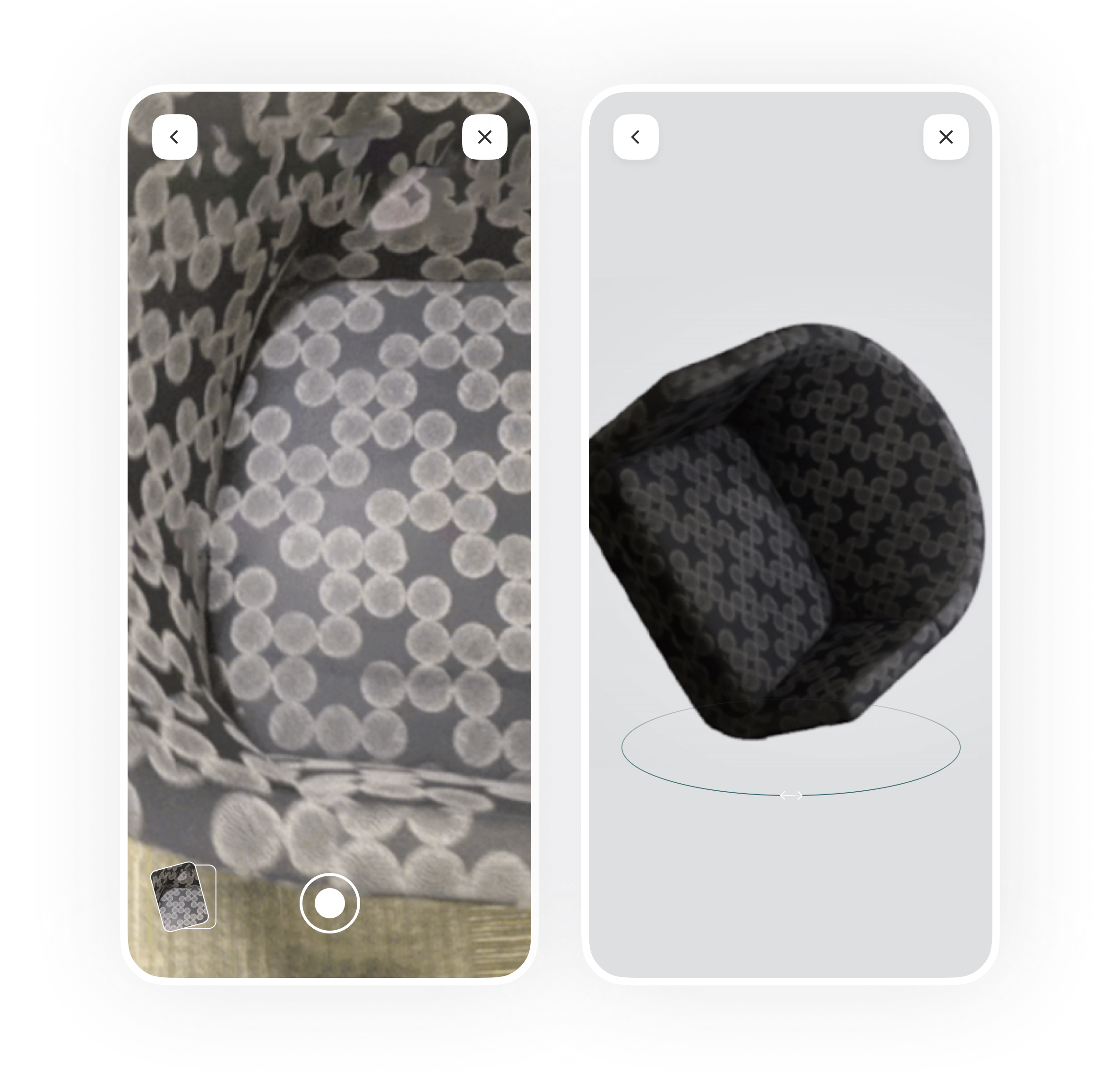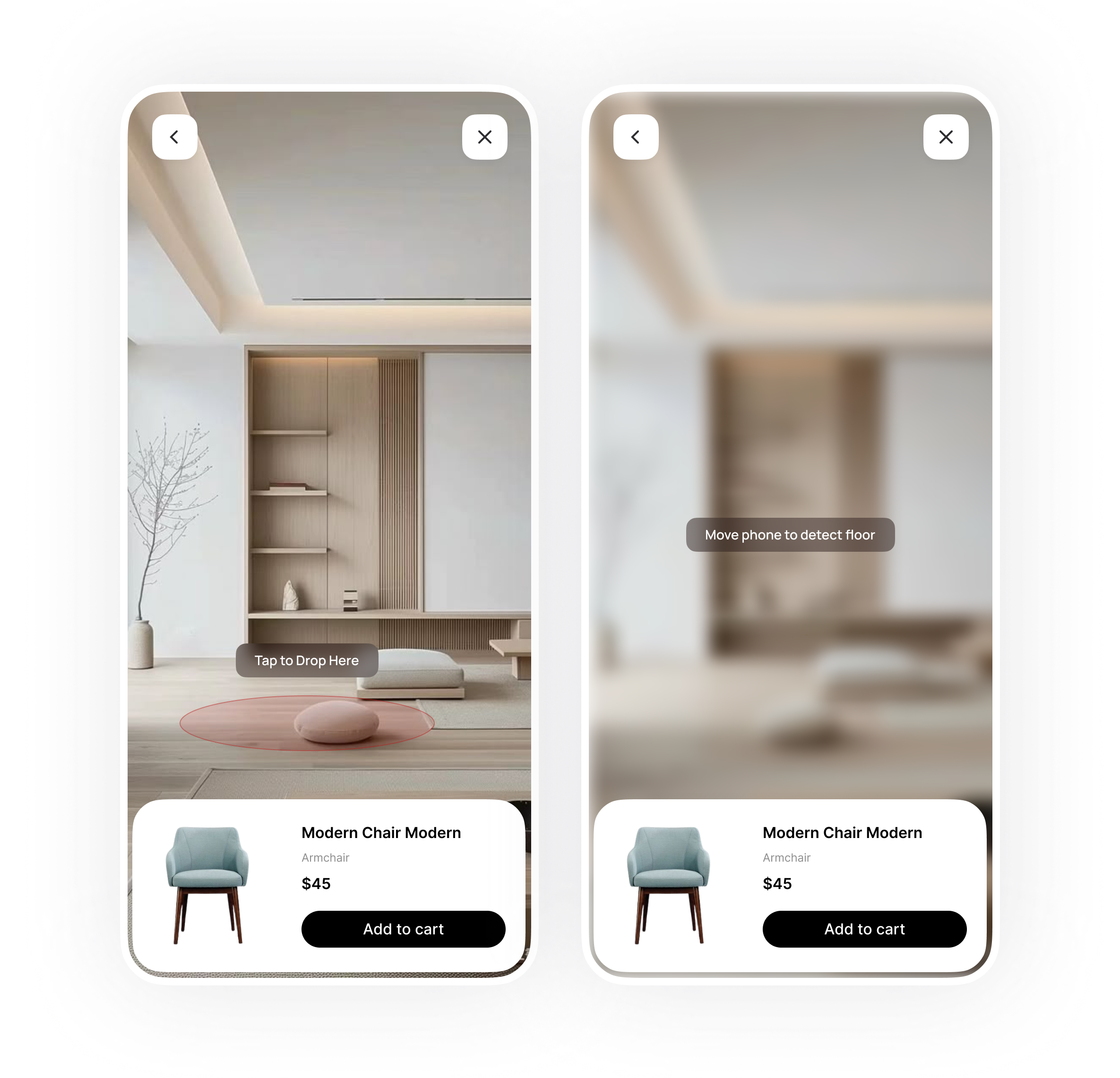
TIMELINE
1 Day in 2024
ROLE
Designer
PURPOSE
Design Challenge
INTRODUCTION
AR Shopping App
Online shopping platforms face large amounts of customer returns due to an inability to understand the product or trust the seller. This is an Photogrammetry based AR selling platform that helps to:
Give customers better understanding of the product and reduce returns
Create a community of trust
Ease the AR product building process

RESEARCH
Current Platforms
We then wanted to understand how the design of current resale apps make this problem worse. We identified specific elements that seemed to contribute to the pain points.
ANALYZE
Journey Mapping
Now that we had an understanding of the user backgrounds and applications they use, we wanted to map out their journeys during the selling and buying process. This helped us connect their biggest pain points to the process.
ANALYZE
Key Takeaways
Buyers cannot see hidden defects - The seller is able to hide defects based on the angles at which they photograph the object. They are also able to photoshop these out post capture.
Buyers cannot judge by comparison - Humans are conditioned to judging on comparison. Current apps with their clear white background make it difficult for users to tell how objects will look in their real context. A shade of lip color will look different on a light skinned model versus a dark skinned one.
Buyers cannot judge size - Without putting the object in context, they are unable to judge how large or small it will be.
Sellers lose money on returns - Since sellers face a large number of returns everyday, they want a process to reduce the loss caused by this. When the return is to a third party seller, the problem becomes more complicated.
Sellers do not have the infrastructure for more complex models - Photos are their only way to show a product. Free trials would be too expensive.
Due to this, buyers and sellers face a lack of trust with these apps
IDEATE
Potential Solutions
What features can solve each side of the shopping and reselling problem for users?
IDEATE
Concept
We wanted to move the power of creating AR objects to the user using Photogrammetry. The seller captures the object by photographing it from multiple views. The app then uses photogrammetry to compare similar points or feature points on the object and stitch it together as a 3D object with textures pre mapped from the images. The buyer then uses the AR object to compare the object in context.
IDEATE
User Journey
We mapped the actions of the two end users with photogrammetry to understand how we could solve some of the key pain points.
PROTOTYPE
Early Flows
We mapped the information architecture of the two end user flows with photogrammetry to understand how we could solve some of the key pain points.
PROTOTYPE
Early AR Mockups
PROTOTYPE
Early AR Mockups
Creating Photogrammetry Models
The core selling flow is built around a photogrammetry-powered capture process that turns everyday camera use into high-fidelity 3D models.
Quick 3D Preview in Listings
Users can rotate 3D models directly in the scroll feed without entering AR mode. This makes product discovery more interactive and builds confidence early in the browsing experience.
The capture experience is guided by a real-time visual feedback system:
Green indicates successful image coverage.
Red with directional arrows shows missing angles or insufficient data.
A grey mirrored effect highlights areas still needing attention or alignment.
This clear, color-coded interface reduces the cognitive load on users while ensuring high-quality model generation. It transforms a technically complex task into a game-like, intuitive flow that boosts user confidence and output consistency.
Viewing Photogrammetry: AR Mode
Once models are generated, users can view items in AR at true scale—complete with accurate materials, shadows, and surface imperfections.
Because the models are photogrammetry-based, they reflect the real condition of the item, including any flaws or wear. This transparency builds buyer trust and helps reduce disputes or returns. The AR experience acts as a digital “in-person” inspection, making online second-hand purchases feel safer and more reliable.

